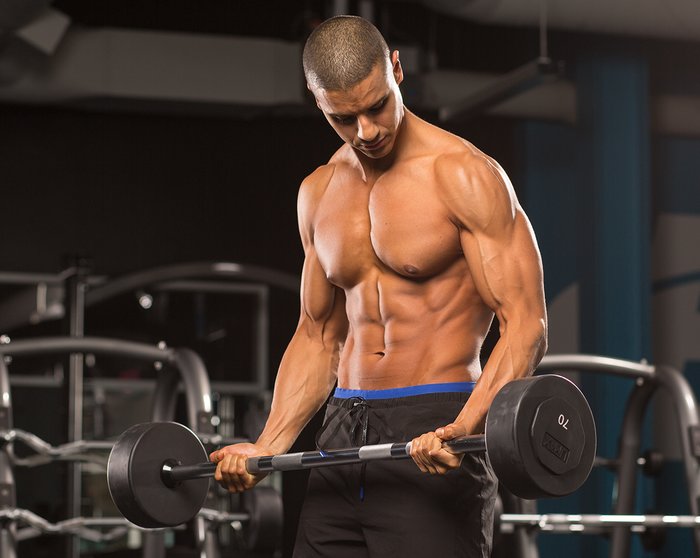"Hey bro, you cutting at the moment? "
"...pardon me?"
Have you ever had this experience in the gym? Pixie Fitness explains all.
'Bulking' and 'cutting' are the latest buzz words in the fitness world. Bulking generally means a person wants to put on muscle and size. Cutting on the other hand is more closely related to losing fat and maintaining as much muscle as possible. In simple terms the former requires you to eat more food and the latter less food. However like most things in the fitness world its just not that simple. Let's look at the best ways to achieve either choice.
The question you're probably asking: it is better to first lose fat than put on muscle and size, or focus on putting on size then concentrate on fat loss? Well it's personal preference. Somebody who is overweight will probably want to concentrate on losing a few pounds before concentrating on building major muscle (cutting), Someone who is lean on the other hand might want to be on putting on muscle and size (bulking).
Bulking

This will require you to eat more food and adequate protein while keeping up a structured weight based program. So how much food should you be eating? An extra 250 to 500 calories a day extra would be a normal calorie increase to gain some size and muscle. An easy rule of thumb to start with would be to multiply your weight in KG's by 2.2. Then multiple the answer to this by 16. This will give you a suggested daily calorie intake.
For example: 60kg (weight) x 2.2 = 132
Now multiple 132 by 16 = 2112 calories.
Monitor your progress on that for a few weeks if your don't see any changes move up to 17 and so on.
Protein intake
This will be one of the most important factor in your bulking phase. In order for your muscle to grow you will need sufficient protein intake, starting point would be to make sure you are taking in at least 1.5g to 2g per KG of bodyweight. For example, if you weigh 70kg you will e eating between 105 - 140g of protein a day, depending on the intensity of your exercise plan.
Protein sources can come from lean beef, turkey, poultry, egg whites, fish , lentils, beans and Greek yogurt.
Carbohydrates and fats
This again will come down to personal preference as long as your protein and calories are on point. For a bulking phase you can opt for higher fats and lower carbs or the reverse. The usual preference for people tends to be a higher carb choice when bulking as the extra carbs will fuel higher intensity and volume training. Your carb choices ideally should come from vegetables, fruits, rice , pasta and grains with your fats from eggs, nuts, fish , coconut oils and avocados.
Training
To put on muscle weight training will need to be a big part of your exercise plan, allowing for maybe 4 to 5 days of split training between upper and lower body, progressing with weight as you get stronger. Recovery is also very important, allow your body sufficient rest days in between training, this will prevent injury and allow recovery, always make sure your form is correct before loading on weight. Cardio is not always necessary but is good to add in on a recovery day once or twice a week.
Cutting

Essentially cutting is losing body fat while trying to maintain as much muscle along the way. Like bulking you need to look at your calorie intake. Create deficit of between 250-500 calories per days. This can be done through food alone or adding in daily cardio to create this deficit. Or even a mixture of the 2.
Protein
As with bulking you will still need to keep protein intake high to preserve muscle while in a deficit. Use the same formula and food choices as above.
Carbs and fats
Once again this will be personal preference as to what works better for your body, so as long as your protein and calories are on point for a cutting phase. Play around with the other two macros to see what works.
Training
Weights should be the preferred method of training. Again work out what you can fit in to your life, if you can only training 3 days per week aim for full body weight sessions, or if you can dedicate more days and time a split routine may work well also. If you do not wish to use food alone to create a calorie deficit then daily cardio can be added in. What type of cardio? If you're short on time some high intensity sprints for 15 to 20 min or if you have the extra time a long walk . Again it's about what you have time for and what you enjoy doing!
How to measure progress during each phase
There's no point in trying to bulk or cut if you have no idea if you're progressing. 1 method alone might not be enough too. Use the scale, pictures, skin fold measurements, even how clothes are fitting to gauge your progress. Its easy to get caught up in numbers especially in a cutting phase so make sure to use all tools available to you to track progress as you may need to adjust food and training according to goal.
The most important factors to consider whether bulking or cutting is to be consistent, track progress along the way, be patient and most importantly enjoy the process!
Aoife is a Foods For Fitness Ambassador and founder of Pixie Fitness. She is a fitness and well-being consultant who loves exercising, nutrition and her family! Follow her journey at www.pixiefitnessdublin.ie or on Instagram here. ![]()



